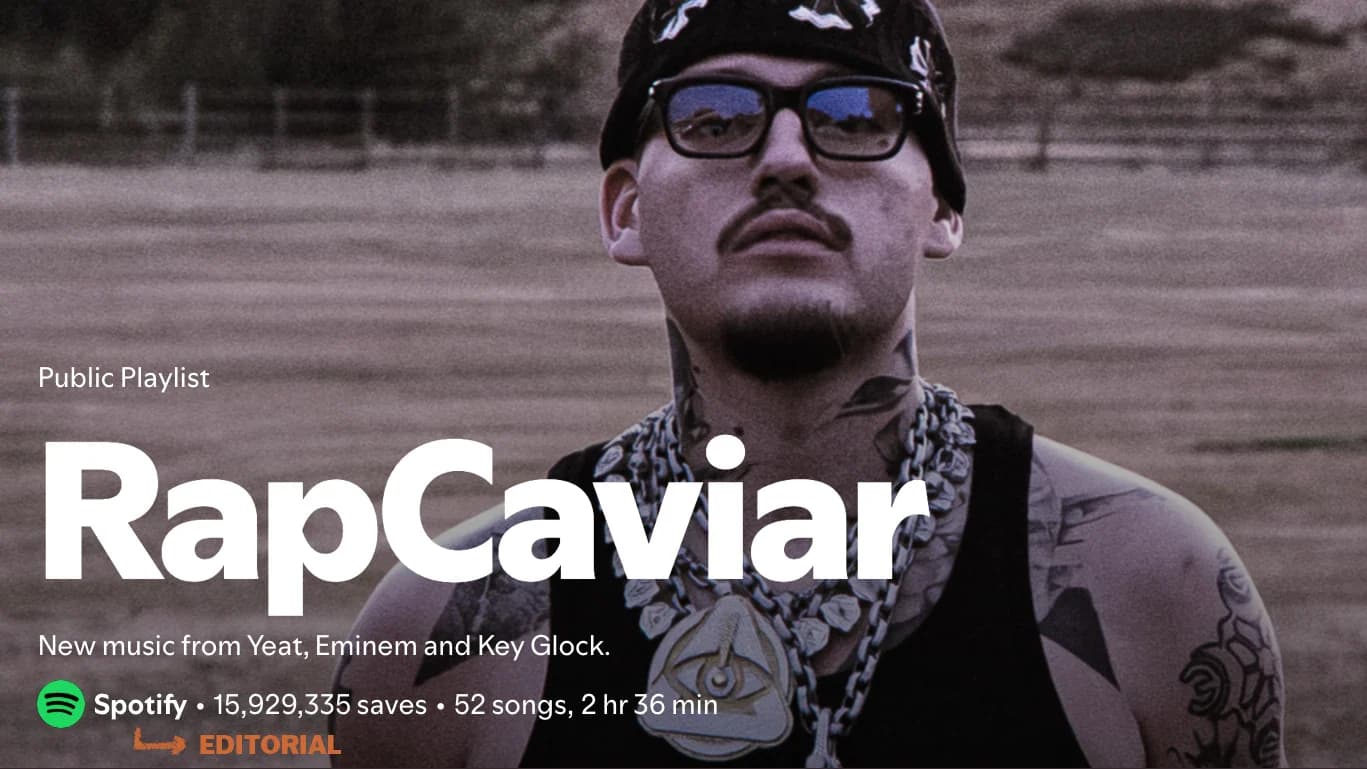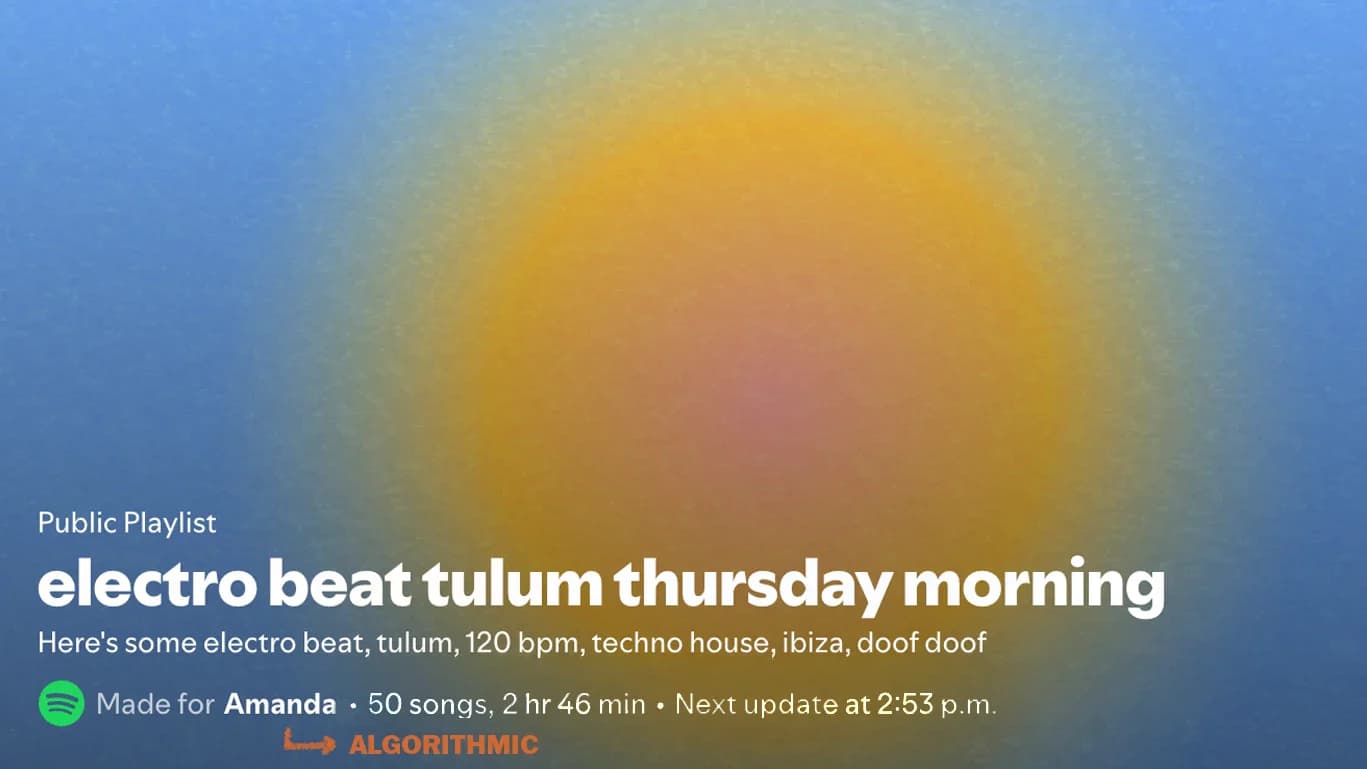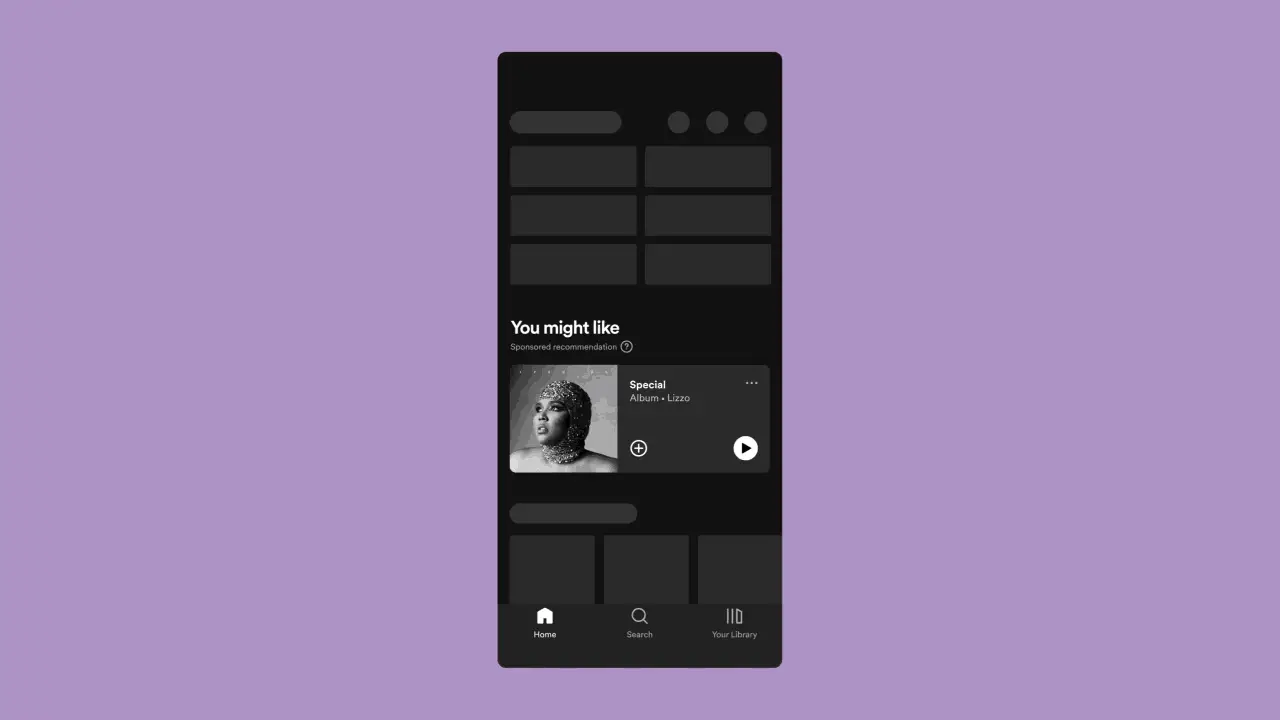How to Get on Spotify Algorithmic Playlists in 2025

By Sarah Jamieson
Getting your music onto Spotify algorithmic playlists can completely change your career.
Unlike editorial playlists, which rely on curators, algorithmic playlists like Discover Weekly, Release Radar, Radio, and Daily Mix are powered by the Spotify algorithm.
These playlists analyze what listeners save, share, skip, and replay to predict exactly what songs they’ll love next. They’re entirely fueled by engagement.
For independent artists, that makes algorithmic playlists one of the most powerful growth tools on the platform. If your track resonates with fans, it has a real shot at landing on Spotify algorithmic playlists and reaching thousands of new listeners who are already primed to connect with your music.
This guide breaks down everything you need to know: how to get on Spotify algorithmic playlists, how to maximize tools like Spotify Discovery Mode and Spotify Marquee, and which strategies actually move the needle.
- Editorial Vs. Algorithmic: How To Get On Spotify Playlists
- Why Spotify Algorithmic Playlists Feel Hard to Crack
- Which Tools Actually Boost Spotify Algorithmic Playlist Results?
- What Other Organic Strategies Help You Get on Spotify Algorithmic Playlists?
- Common Pitfalls That Kill Spotify Algorithmic Playlists' Momentum
- A Step-By-Step Plan to Get on Spotify Algorithmic Playlists
- Building Long-Term Momentum Beyond Spotify Algorithmic Playlists
Editorial Vs. Algorithmic: How To Get On Spotify Playlists
Spotify has three main playlist types: Spotify editorial playlists, Spotify algorithmic playlists, and user-made playlists.
Spotify editorial playlists like RapCaviar are curated by Spotify’s team. They have a massive reach, but they’re also highly competitive. Most slots go to tracks with proven traction, which can make them feel out of reach for independent artists.


Instead of pinning your hopes on one elusive editorial slot, you’re building a repeatable process that drives momentum. It’s a smarter, more sustainable way to get more streams on Spotify over time.
Why Spotify Algorithmic Playlists Feel Hard to Crack
Spotify algorithmic playlists are powerful, but they’re also crowded. Every single day, more than 120,000 new tracks hit Spotify. In 2023, only 28% of artists managed to pass 1,000 monthly listeners.
Without a plan, it’s easy for your music to get lost in the din.
A common myth is that high stream counts are all that matter. In reality, the Spotify playlist algorithm prioritizes listener satisfaction. Saves, repeat plays, and low skip rates carry far more weight than inflated play counts.
That means a smaller, loyal fanbase can outperform thousands of empty, passive streams inside Spotify algorithmic playlists.
Yes, competition is rising. From AI-generated tracks to Spotify’s own “ghost artist” experiments. But artists who focus on genuine engagement still break through.
If you’re serious about how to get more Spotify streams, focus on turning casual attention into action. Start with short clips that spark curiosity, presaves that lock in support, and direct links that make listening frictionless.
That’s how you move listeners from casual scrollers to repeat streamers, and how you train the algorithm to push your music wider.
How Spotify’s Algorithm Works
Spotify’s algorithm is designed to keep listeners happy. Every decision the platform makes about your song is based on one question: “Will this person enjoy it enough to keep listening?”
The algorithm looks at dozens of data points:
- Engagement metrics: Saves, playlist adds, repeat listens, and shares are positive signals. Skips and low completion rates are negatives.
- Streaming velocity: The first 28 days after release are critical for gathering data and testing reach.
- Audience segmentation: Spotify ranks users as super listeners, moderate listeners, and casual listeners. Engagement from your super fans carries more weight.
- Metadata accuracy: Proper tagging for genre, sub-genre, mood, and instrumentation helps Spotify’s system match your track with the right audience.
- Cross-platform signals: TikTok virality and Instagram trends often predict Spotify success.
Think of Spotify’s algorithm as a funnel. If your track resonates with your core listeners, Spotify expands its reach, testing it on larger and more varied audiences. That’s how small signals turn into massive exposure.
For example, Short TikTok teasers sparked saves and shares for JVKE’s Golden Hour. This triggered Spotify’s algorithm, leading to major placement in Spotify algorithmic playlists and more than a billion streams.
Which Tools Actually Boost Spotify Algorithmic Playlist Results?
Spotify has tools designed to promote your music, but they work best when layered on top of organic momentum.
Spotify Promotion Tools at a Glance
| Tool | Pros / Cons |
|---|---|
Spotify Discovery Mode | Pros: Increases exposure in radio and autoplay, performance-based cost (30% commission), best for tracks already showing organic traction. Cons: Commission reduces payout per stream; not ideal for untested tracks. |
Spotify Marquee | Pros: Full-screen, paid campaign with high conversion; Spotify reports higher save rates; ideal for launches or re-engagement. Cons: Requires a budget; limited to certain markets. |
Spotify Showcase | Pros: Highlights a song or album on the Home tab; strong for older catalogues and re-releases. Cons: OK results on its own, but works best with other methods. |
The basics:
- Pitch unreleased tracks to Spotify for Artists for Release Radar and Spotify playlists.
- Combine Discovery Mode and Marquee to amplify traction.
- Use Showcase to give older songs new life.
For example, Magic City Hippies combined Discovery Mode with Marquee to triple their audience and boost save rates by 30%. This resulted in more prominent placement in Spotify algorithmic playlists.
How to Get On Spotify Discovery Mode
Spotify Discovery Mode is one of the platform’s most talked-about tools, and one of the most misunderstood.
This feature lets you “flag” tracks for promotion in Spotify’s radio and autoplay features, but there’s a trade-off: Spotify charges a 30% commission on streams generated through Discovery Mode.
While some artists view this as “pay-to-play,” it’s closer to a paid ad campaign on TikTok or Instagram, with one important difference: Spotify only charges for streams (30 seconds or more) that listeners engage with.
The key to using Discovery Mode effectively is timing. It’s designed to amplify tracks that already show strong engagement, not to rescue songs with poor metrics. Opting in too early can waste your budget and hurt your algorithmic reputation.
Here’s how successful indie artists approach Discovery Mode:
- Choose tracks with high saves and strong listener retention.
- Pair campaigns with organic momentum from TikTok or Instagram.
- Use Discovery Mode as a testing lab to identify new audiences.
- Review analytics to plan your next rollout.
Discovery Mode can feel intimidating, but when used strategically, it’s a powerful way to scale your audience without relying on gatekeepers.
Spotify Marquee
Spotify Marquee is Spotify’s paid, full-screen recommendation campaign that appears when listeners open the app. Unlike traditional ads, Marquee targets users who’ve already shown interest in your music, meaning it’s a tool to deepen fan relationships, not just build awareness.

However, Marquee requires a budget and is currently limited to certain countries, so it’s best for artists who already have some traction. Think of Marquee as a “high-impact spotlight.” It’s ideal for big moments in your campaign calendar.
What Spotify Showcase Means for Musicians
Spotify Showcase is designed to give your music extra visibility on Spotify’s Home tab. This makes it a powerful option for keeping older tracks alive or shining a light on catalogue releases.

Showcase campaigns work best when paired with organic promotion and social buzz. They’re like a billboard that greets listeners right when they open Spotify, but you’ll get the most out of them if fans are already talking about your music elsewhere.
How to Get on Release Radar
For independent artists, Re...
